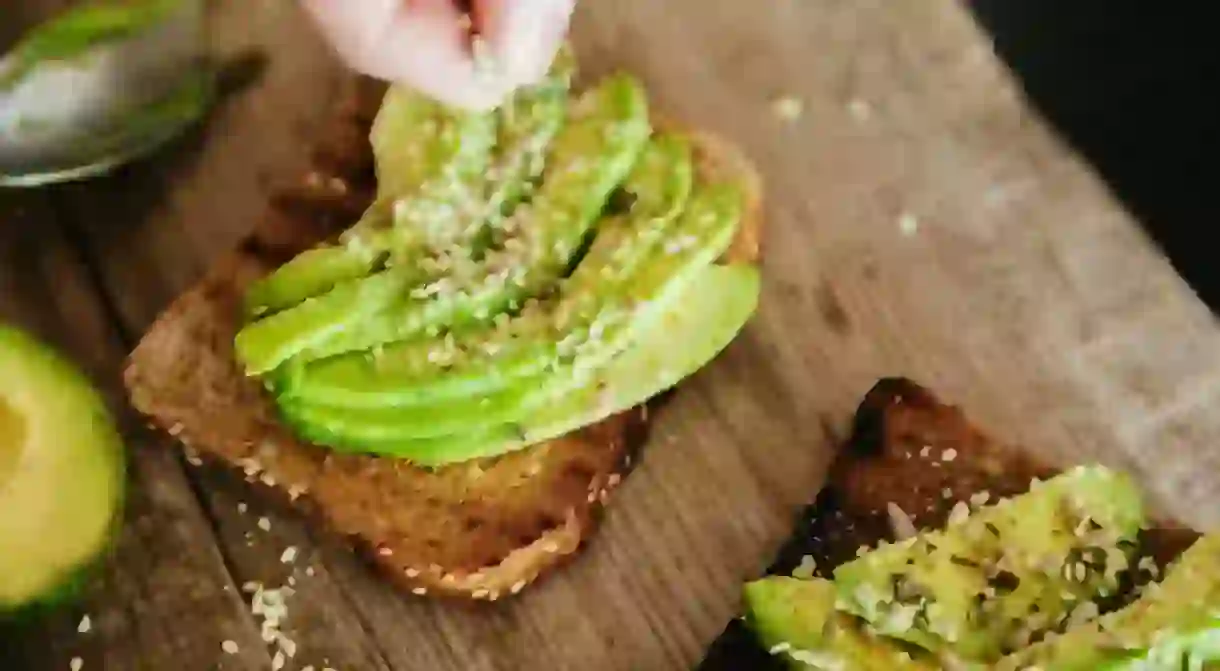Your Favourite Foods Could Become Extinct Soon

You should savour the smell of coffee in the morning and the feeling of chocolate melting on your tongue while you can, because by the time you have grandchildren you might not get to experience them any more.
Soon you might have to wave goodbye to hummus, avocado toast and wine. Global warning and increasingly extreme weather means that crops all over the world are struggling with disease and changing conditions.
Anyone who’s watched Blue Planet or felt the effect of more extreme weather knows that the wildfires in America, rising temperatures in Antarctica and the coral bleaching in the Great Barrier Reef are no joke.
Climate change’s effect on the earth could mean that the days of the following foods could be numbered.
Chocolate

Volatile global temperature means that cacao trees, which only grow 20° south and north of the equator if the humidity is high enough and the soil sufficiently rich, are struggling.
A study by the International Center for Tropical Agriculture states that cacao farmers will start experiencing a reduced yield from their trees by 2030.
Peanuts

Peanuts are fussy about they grow. if it’s too wet, the trees will mould, and if there’s not enough rain they won’t germinate. They also respond poorly to heat, as the peanut shoots scorch when it’s too hot.
A lot of America’s peanut supply comes from the southern states of the US, which are particularly vulnerable to heat waves and droughts. This means that peanuts could become extinct in the future.
Honey

The declining bee population means the honey production is slowing. Honeybee Colony Collapse Disorder means that the number of bees have declined by 40% in the last 10 years. Bees are such an important part of our ecosystem that their extinction would mean a lot more than not having honey in our morning porridge – it would mean the loss of many crucial crops, from basic foodstuff to cotton.
Avocados

The popularity of avocados in recent years means that the market is struggling to keep up with demand – especially when you consider how labour intensive they are to grow. On average, it takes the amount of water of four showers to grow two avocados. It doesn’t help that 80% of America’s avocados are grown in California, which is experiencing a drought. Getting avocados in the hands of shoppers is becoming harder and more expensive, so it’s possible you’ll have to kiss goodbye to your millennial Instagram posts some point soon.
Rice, maize and wheat

These are the most essential crops that humans grow, as they feed most of the population. These crops make up 51% of the world’s calorie intake, and demand is set to increase up to 33% by 2050. A 2016 study by Nature Climate Change says that land used to grow crops could soon be unusable, because of unpredictable global temperature and changing weather conditions.
Strawberries

Your favourite summer berry soon might not have a place on your pavlova. Unstable climate conditions in Florida and California, according to the International Society for Horticultural Science, mean that the 95% of American strawberries they provide are threatened. The unusual weather could also mean a price increase for the strawberries that do come to market.
Chickpeas

It takes approximately 4,000 litres of water to produce a can (400g) of chickpeas. Worldwide droughts have reduced production of the legume by more than half. And you can’t make hummus without chickpeas.
Maple syrup

The sticky substance your pour on your waffles is made from the sap of the sugar maple tree – and they’re in decline. The sap is only able to flow from the tree when temperatures fall below zero at night and rise above freezing during the day, the pressure of which forces the sap out of the tree. Climate change has made this one-predictable weather unreliable. Timothy Perkins, Ph.D., director of the Proctor Maple Research Center, told Maple Source: ‘Climate change definitely will, and already has, had an effect on the maple syrup industry.’
Coffee

Climate change is responsible for this one as well. It threatens the areas where coffee grows, as well as decimating bees, who are responsible for around a quarter of coffee bean fertilisation. Coffee pollinated by bees has an increased yield and quality, and increased temperatures and changeable weather means that the bees are checked in their tracks.
Bananas

The ever-popular fruit is falling prey to unpredictable temperatures and weather patterns. Bananas need a consistant water supply and moderate weather to grow steadily, and the lack of both means that banana farmers are having to buy expensive irrigation systems rather than rely on nature. Additionally, America’s most popular banana, the Cavendish, is being struck with a disease called ‘Tropical Race 4’, which is decimating banana across the world.
The most popular banana stateside — called the Cavendish banana — is also falling prey to a disease called“Tropical Race 4,” which is wiping out banana plantations across the globe.
Wine grapes

As if the loss of all your favourite foods wasn’t enough, you won’t even be able to drown your sorrows with a nice glass of wine. Over the next 50 years we’re looking at an 85% drop in the production of wine grapes, as the climate becomes to hot to grow them. There are more than 1,000 varieties of wine grapes but only 12 of them make up the majority of our favourite wines, so you might have to say goodbye to your favourite bottle. If growers diversify their crops, however, other kinds of grapes could make some deliciously new kinds of wine.













